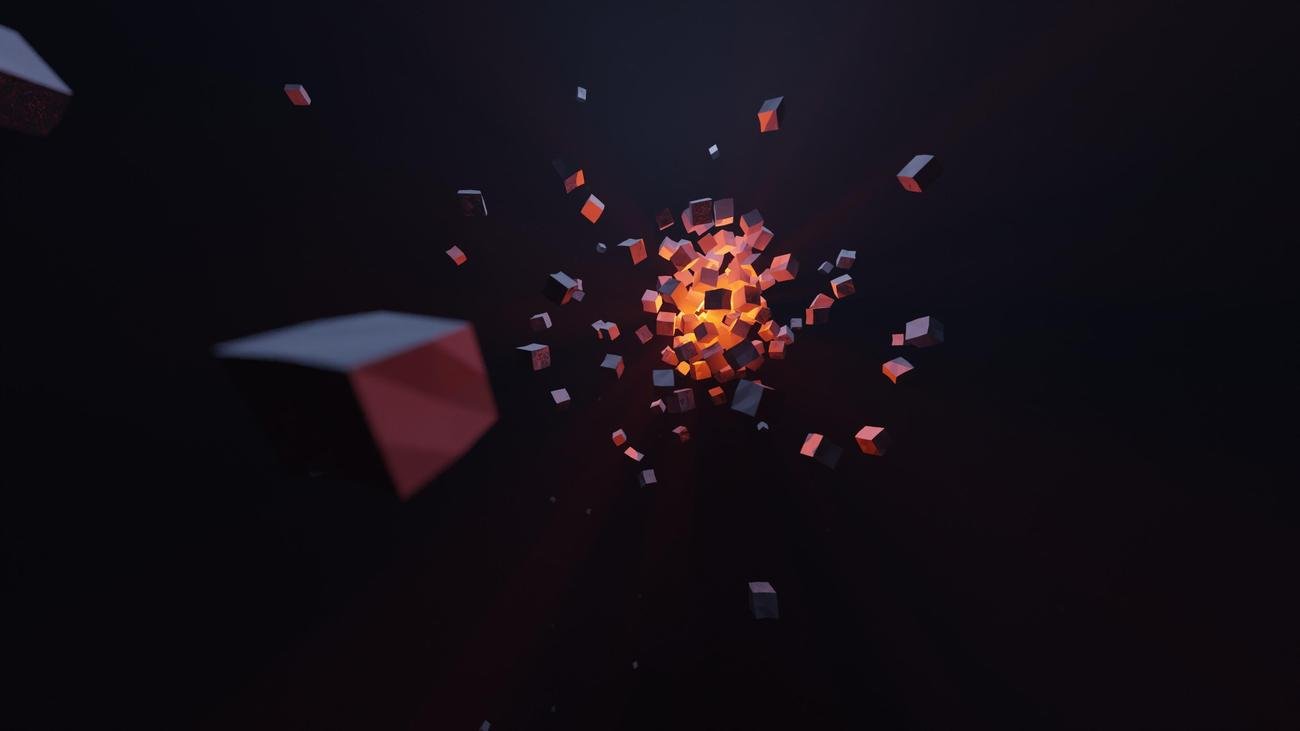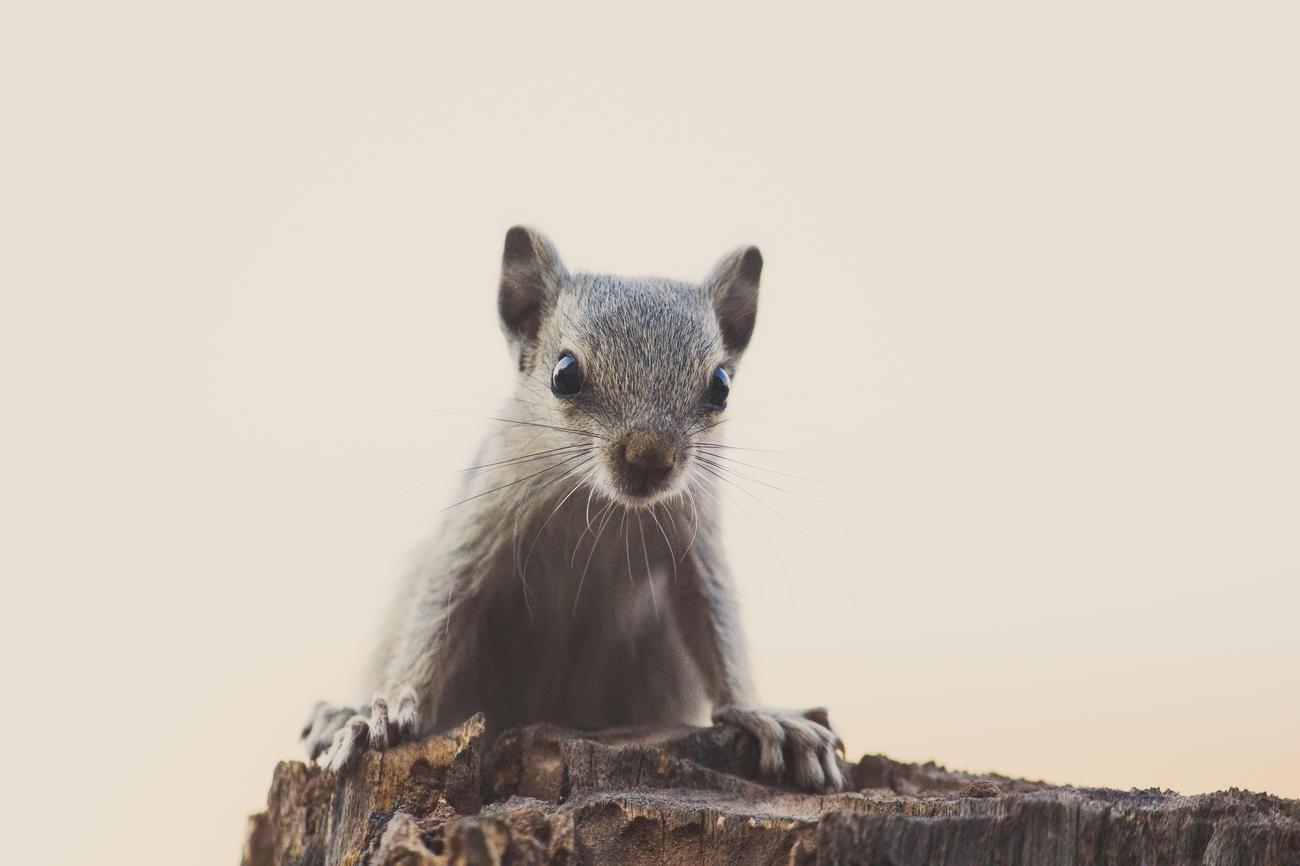Animation is an artform that has captivated audiences for decades, with its ability to bring characters and stories to life in ways that live-action simply cannot. But did you know that animation is not limited to just children’s entertainment? In fact, animation has flexible use across various industries and can be enjoyed by audiences of all ages. Welcome to [Fascinating Fun Facts About Animation: Exploring the Magic of the Industry], where we delve into the world of animation and discover intriguing tidbits that showcase its versatility. In this article, we’ll explore facts about animation that highlight its flexible nature and dispel the notion that it is exclusively meant for kids.

Fun Facts About Animation: Exploring the Magic of the Industry
Animation has captivated audiences for over a century, bringing imagination to life through moving images. Let’s dive into the fascinating world of animation and uncover some delightful fun facts that will leave you in awe.
Animation’s Whimsical Origins
Animation has a rich history, and the word “cartoon” was first used to describe this magical art form in October 1916. It’s incredible to think how far animation has come since then, evolving into the vibrant and diverse industry we know today. But did you know that the term “animation” itself has roots in French, translating to “soul”? This beautifully signifies the process of bringing characters to life, infusing them with a spirit that captivates our hearts.
“Animation breathes life into drawings, infusing them with a soulful enchantment that transcends reality.”
Claymation’s Secret Skeletons
Claymation, a form of animation using clay models, has brought us beloved characters like Wallace and Gromit. While their movements may seem natural and seamless, most claymation characters have a little secret hidden beneath their squishy exteriors. To create their fluid motions, these characters are built with miniature skeletons or armatures. These skeletons provide a solid foundation, allowing animators to manipulate and articulate the clay models with precision and finesse.
“Claymation characters may seem like pliable playthings, but their hidden skeletons bring them to life, allowing them to dance across the screen with grace and charm.”
The Captivating Creations of Walt Disney
It’s impossible to delve into animation without acknowledging the monumental contributions of Walt Disney. In 1938, this visionary creator won not one, but eight Oscars for his groundbreaking film “Snow White.” For each of the seven dwarfs, Disney received a miniature Oscar named after the respective character. The eighth Oscar, of normal size, represented the overall achievement of this animated masterpiece. It’s a testament to the impact of animation that Disney’s work was recognized on such a grand scale.
“Walt Disney’s journey into animation was no fairy tale, but his incredible vision and passion transformed the industry, making dreams come true on the silver screen.”
Pixar’s Illuminating Lamp
When we think of Pixar, our minds are instantly drawn to the iconic image of a playful lamp hopping onto the screen. This lamp, affectionately named Luxo Junior, first made its appearance in a captivating animated short film in 1986. Since then, it has become synonymous with the enchantment and innovation that Pixar consistently delivers. Luxo Junior serves as a reminder of the magic that can be infused into even the simplest of objects, encapsulating the spirit of animation as it illuminates our imaginations.
“As Luxo Junior bounds onto the screen, we’re reminded that even the most ordinary objects can ignite extraordinary journeys in the world of animation.”
Mickey Mouse’s Humble Beginnings
Mickey Mouse, the lovable and iconic character who has captured the hearts of millions worldwide, has humble origins steeped in rejection. When Walt Disney initially pitched the idea of Mickey Mouse to Louis Mayer, the head of MGM Studios, it was met with skepticism. Mayer expressed concern that women would be scared of a mouse as a central character. However, this setback only fueled Disney’s determination, leading him to create a character who would become a global sensation, transcending cultural boundaries and inspiring generations of audiences.
“Mickey Mouse may be small in stature, but his impact on the world of animation is immeasurable, proving that even the tiniest creatures can leave an indelible mark.”
Animation is a captivating art form that has woven its magic into the fabric of our lives. From the mesmerizing combination of visuals and sound in Disney’s “Fantasia” to the first-ever cartoon character, Mickey Mouse, animation continues to evolve, entertaining and inspiring audiences across the globe. As we uncover these fun facts and discover the inner workings of this enchanting industry, let’s celebrate the boundless creativity and limitless possibilities that animation offers.
So, the next time you watch an animated film or get lost in a whimsical cartoon world, remember the rich history and fascinating facts that animate the magic before your eyes.
“Animation, an enchanting symphony of art and storytelling, weaves the spellbinding tapestry of imagination, captivating hearts and minds with each frame.”
Fun facts about animation! Have you ever had questions about animation? Curious about what to make an animation about? Or maybe you’re wondering where animation is heading? Well, look no further! We’ve got all the answers for you. Whether you’re a seasoned animator or just starting out, our comprehensive guide on animation will satisfy your curiosity. Just click here to dive into the world of animation and get answers to all your burning questions. So, what are you waiting for? Click on “questions about animation” and embark on a fascinating journey through the world of animation. And if you’re wondering about what to create your next animation about, click on “what to make an animation about” for some incredible inspiration. Don’t miss out on all the exciting things going on in the world of animation, click on “no when i was talking about animation is going” and be in the know. Happy animating!
what to make an animation about
no when i was talking about animation is going
Facts about animation #5: Animation has flexible use.
Animation is a versatile art form that finds its way into various industries, providing endless opportunities for creativity and expression. Whether it’s in the realms of film, advertising, education, or even scientific visualization, animation offers a flexible medium to convey ideas, captivate audiences, and bring imagination to life.
Animation in Film: From Blockbusters to Indie Gems
When we think of animation, the first thing that comes to mind is often animated films. And rightly so! Animation has been a pillar of the film industry, delivering memorable characters, captivating stories, and stunning visuals. From the beloved classics like “The Lion King” to modern masterpieces like “Spider-Man: Into the Spider-Verse,” animation has proven its ability to transcend age and genre, captivating audiences of all backgrounds.
“With animation, filmmakers can unleash their creativity and push the boundaries of storytelling, creating captivating worlds and characters that wouldn’t be possible through live-action alone.”
Animation in Advertising: Making Brands Come to Life
Did you know that animation plays a significant role in the world of advertising? From commercials to brand mascots, animation has the power to make brands come to life and leave a lasting impression on consumers. Think about iconic characters like Tony the Tiger and the Energizer Bunny, or memorable animated commercials like the dancing California Raisins. Animation adds charm, personality, and aesthetic appeal to advertisements, helping companies tell their stories in a visually engaging and entertaining way.
“Animation allows advertisers to tap into the boundless realm of imagination, creating characters and scenarios that resonate with audiences and leave a lasting brand impression.”
Animation in Education: Combining Entertainment and Learning
Animation has become an invaluable tool in educational settings, offering a fresh and engaging way for students to absorb information. From educational shows like “Sesame Street” to interactive e-learning platforms, animation helps simplify complex concepts, making them more accessible and entertaining for learners of all ages. Whether it’s teaching children about math, science, or history, or helping professionals grasp intricate concepts in fields like medicine and engineering, animation has the power to transform educational experiences.
“Animation brings learning to life, offering a dynamic and interactive experience that sparks curiosity, enhances understanding, and makes learning a joyful adventure.”
Animation in Scientific Visualization: Unraveling Complex Concepts
In the world of science, animation plays a pivotal role in unraveling complex concepts and making them accessible to both experts and the general public. Whether it’s animating molecular processes, illustrating astronomical phenomena, or visualizing the inner workings of the human body, animation brings scientific concepts to life in a way that static pictures or text could never achieve. Through animation, scientists can communicate their findings effectively, helping us all appreciate and understand the wonders of the natural world.
“Animation serves as a gateway to the world of science, allowing us to explore realms that are otherwise invisible to the naked eye and grasp the intricacies of the universe in captivating visual narratives.”
Animation in Various Industries: From Gaming to Virtual Reality
Beyond film, advertising, education, and scientific visualization, animation has found its way into numerous other industries. The gaming industry, for instance, relies heavily on animation to create immersive and interactive worlds for players to explore. Animation also plays a vital role in virtual reality experiences, where it enhances the sense of presence and realism, allowing users to step into virtual realms and interact with virtual characters and objects.
“Animation transcends boundaries, connecting different industries and augmenting various mediums, be it gaming, virtual reality, or any other field that thrives on captivating visuals and immersive storytelling.”
In conclusion, animation is a versatile art form that finds its place in diverse industries. Whether it’s in film, advertising, education, scientific visualization, gaming, or virtual reality, animation offers a flexible and captivating medium to tell stories, educate, and entertain. Its ability to bring characters, brands, and ideas to life is what makes animation truly magical.
So next time you watch an animated film, encounter an animated ad, or learn through an animated educational video, take a moment to appreciate the flexibility and impact of animation in our lives.
“Animation: an infinitely adaptable art form that dances, teaches, captivates, and immerses in the ever-changing rhythm of the world.”
Facts about animation #7: Animation doesn’t have to be childish.
Animation has long been associated with children’s entertainment, but it’s time to debunk that myth. The truth is, animation doesn’t have to be childish. In fact, it offers a world of possibilities for captivating storytelling, artistic expression, and even career opportunities. So let’s dive into some fascinating fun facts that will open your eyes to the magic of animation beyond its perceived childishness.
1. Animation is a versatile art form that can be used in various industries. While we often think of animation in terms of cartoons and movies, its applications go far beyond entertainment. Animation plays a significant role in advertising, bringing brands to life and leaving a lasting impression on consumers. It’s also an invaluable tool in education, simplifying complex concepts and making them more accessible and engaging for learners of all ages. Additionally, animation has a pivotal role in scientific visualization, unraveling intricate ideas and making them understandable to both experts and the general public. It even extends to industries like gaming and virtual reality, where it creates immersive and interactive experiences. So, animation isn’t just for kids—it’s a powerful medium that connects different industries and augments various mediums, enhancing visuals and storytelling.
Animation brings characters, brands, and ideas to life and has a flexible and captivating impact on storytelling, education, and entertainment.
2. Animation offers job opportunities and flexible use across various applications. Contrary to the notion that animation is a limited field, it actually presents a wide range of career opportunities. From traditional hand-drawn animation to 3D modeling and motion graphics, there are plenty of paths to explore. Animators are in demand not only in the entertainment industry but also in advertising, marketing, gaming, and even architecture. The skills you acquire in animation can be applied to various projects and industries, making it a versatile craft with endless possibilities.
The animation industry is a hub of creativity and innovation, offering diverse job opportunities and the chance to work on exciting projects across different fields.
3. Animation has changed art history by offering new possibilities for artists. The introduction of animation revolutionized the art world. It allowed artists to break free from the limitations of traditional mediums and explore new ways of expressing themselves. Animation opened doors to unconventional storytelling techniques, visual experiments, and the blending of reality and imagination. Artists embraced the medium’s potential to create fantastical worlds and push artistic boundaries. So, animation has undoubtedly played a significant role in shaping the course of art history.
Animation has given artists a powerful medium to bring their wildest imaginations to life, pushing the boundaries of creativity and challenging traditional artistic norms.
4. Anime is often treated as childish due to its association with Western cartoons, but it’s popular worldwide and makes up a significant portion of animation-based entertainment. Anime, a style of animation originating from Japan, is frequently dismissed as childish due to its association with Western cartoons. However, anime has a massive global following and forms a significant part of the animation industry. It covers a vast range of genres, including action, drama, romance, and even mature themes that appeal to audiences of all ages. So, don’t let the misconception fool you—anime is a diverse and thriving genre that deserves recognition beyond its perceived childishness.
Anime captivates audiences worldwide with its unique storytelling, stunning visuals, and diverse range of genres, proving that animation knows no boundaries.
5. Many people consider animation to be childish and unsophisticated, but it has the power to impress and combine different types of information. Despite the prevalent belief that animation is unsophisticated, it has the remarkable ability to impress and captivate viewers. Animation can seamlessly combine different types of information, blending entertainment, education, and even complex scientific concepts. It’s a medium that bridges the gap between creativity and knowledge, making it appealing to both adults and children alike.
Animation’s ability to combine entertainment and information creates a powerful medium that engages and educates audiences in a captivating way.
In conclusion, animation doesn’t have to be confined to the realm of children’s entertainment. It’s a versatile art form that offers career opportunities, has played a significant role in art history, and can impress and engage viewers of all ages. So let go of the perception that animation is only for kids and embrace the magic and endless possibilities it brings.
Remember, animation is not just for children. It’s a captivating and versatile medium that deserves recognition and appreciation beyond its perceived childishness. So let’s celebrate the magic of animation and explore its incredible potential.

FAQ
Q: What is flexible use in animation?
A: Flexible use in animation refers to its ability to be applied across various industries and mediums. Animation is not limited to just movies or cartoons; it is increasingly used in advertising, marketing, education, video games, simulations, and even virtual reality experiences. Its versatility allows for storytelling, visual communication, and interactive experiences in a wide range of applications.
Q: Is animation only for children?
A: No, animation is not just for children. While animation has long been associated with cartoons and kids’ entertainment, it has evolved into a versatile and multifaceted art form that appeals to audiences of all ages. Animated films and TV shows can tackle complex themes, explore adult-oriented narratives, and offer thought-provoking storytelling. Additionally, animation is widely used in advertising, visual effects in live-action films, and educational content targeted at adults. It is a medium that can convey diverse emotions, messages, and experiences, appealing to a wide range of audiences.
Q: How has animation changed art history?
A: Animation has significantly impacted art history by introducing new possibilities and pushing the boundaries of traditional artistic techniques. Through animation, artists can experiment with movement, time, and visual storytelling in ways that were not possible with static art forms. It has expanded the definition of what art can be and has influenced other art disciplines, such as film, video games, and even interactive installations. Animation has opened doors for artists to create immersive and dynamic experiences that engage audiences in unique and captivating ways.
Q: What are some interesting facts about animation?
A: Animation is a fascinating field with many intriguing facts. For example, did you know that the lamp in Pixar movies is named Luxo Junior? It is a reference to a 1986 animated short film. Additionally, animation is sometimes referred to as the “ensoulment” of characters, as it brings them to life through motion and performance. These are just a couple of examples, but there are many more captivating facts about animation that highlight the creativity, innovation, and technical prowess behind this art form.
Q: What are the career prospects in animation?
A: The animation industry offers a wide range of job opportunities and continues to grow in demand. Skilled professionals are needed in various roles, including animators, storyboard artists, technical directors, visual effects specialists, and more. With the expansion of animated content in industries such as entertainment, advertising, education, and gaming, the job market for animators is promising. Creativity, technical skills, and a passion for storytelling are valued in the animation industry, making it an exciting career path for those interested in visual arts and digital media.
- Red Cloud, NE: Discover Willa Cather’s Legacy - April 11, 2025
- Remember Old Social Media Sites? Their Rise and Fall - April 11, 2025
- How many days till Feb 3?Accurate Countdowns & Tools - April 11, 2025
















